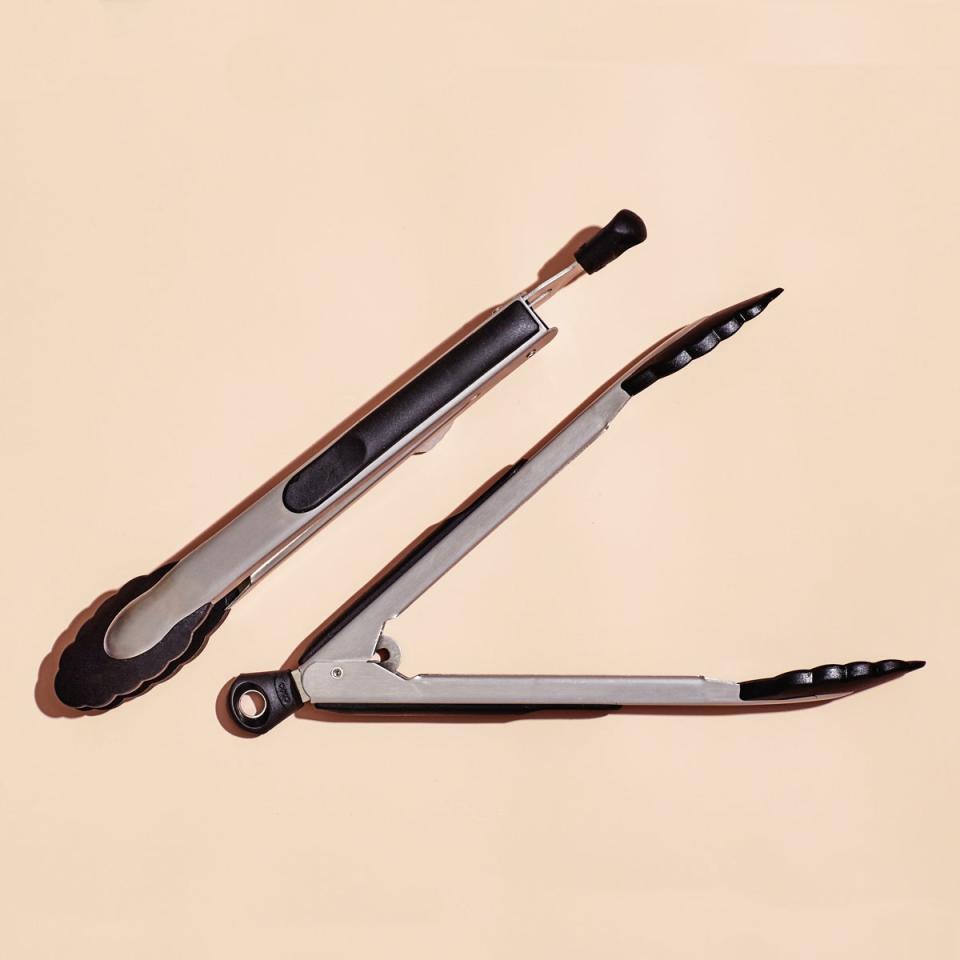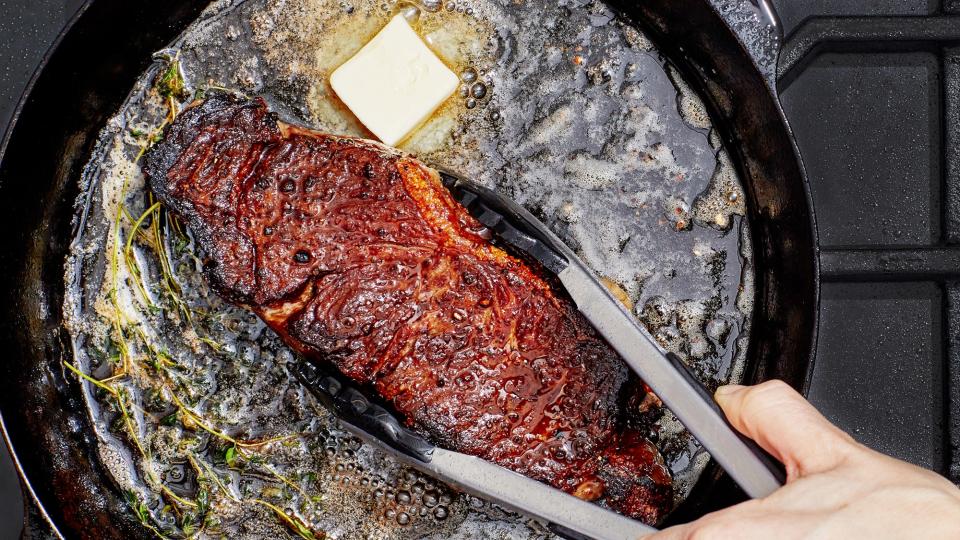The Test Kitchen Swears By These Tongs
There are 6-inch tongs and 16-inch tongs, tongs made of metal and tongs made of bamboo, tongs that look like tweezers and tongs that look like they were used to deliver babies in the 19th century. How are you supposed to know what’s right? Chris Morocco is here to help.
As he sees it, there are three qualities that any cooking tong worth owning possesses: a short length, a pull-tab locking mechanism, and plastic-tipped heads. In other words, these 9-inch OXO tongs are the ones you’ll likely find in the BA Test Kitchen.

Whether you’re nestling a 30-oz rib-eye against a blazing hot cast iron skillet or fishing out a whole chicken from a stock pot or tossing pasta to coat every strand in sauce, being able to wield a pair of tongs with precision and confidence is key. “That’s why I don’t believe in long tongs,” says Chris. “You have less control. With a long tong, you’re not able to manipulate heavy things with ease.”
Why, you ask? Let’s back up to seventh-grade science class. “This right here,” Chris says, snapping at me with a pair of those tongs for emphasis, “is a simple machine.” Common cooking tongs are an example of a third-class lever. The fulcrum (where the arms of the tongs connect) is at one end, the load (what you’re picking up with the tongs) is at the other, and the effort you apply (by squeezing the tongs with your hand) is in the middle. The beauty of a lever is that it multiplies your efforts; a small motion with your fingers creates a larger movement at the end of the tongs. The longer the tongs, the more that movement is multiplied. But it also means less control over precise maneuvering.

While length is Chris’ first criteria in choosing a pair of tongs, it’s not the only one. “Tongs that lock are essential for storage,” he says. (Nobody likes the frustration of an open pair jamming a drawer.) There are three main locking mechanisms on the market—tongs with a pull-tab lock at the fulcrum, tongs with a ring that slides up and down the arms, and tongs with an automatic inner lock governed by dark sorcery that closes or opens depending on if the head is pointed up or down. “The pull-tab kind is the only one that works,” Chris says. “I don’t mess with the up-down thing. And tongs with the sliding ring? Horrible! The ring is always where you don’t want it to be while you’re cooking.”
Material must also be considered. Do you opt for a stainless steel pair or cooking tongs that are silicone- or nylon-tipped? While Chris says there’s an argument to be made for stainless, the nylon-tipped version can be used on non-stick pans, which makes it the better bet if you’re only going to buy one pair. (He says to avoid silicone, which can discolor and crack after repeated exposure to high heat.)
Oh, and the non-slip handle? That added bonus ensures he can maintain a controlled grip while maneuvering both the slenderest stalks of asparagus and the heaviest of roasted chickens. And that, my friends, is science.
Buy it: OXO Good Grips 9-Inch Locking Tongs with Nylon Heads, $14 on Amazon
All products featured on bonappetit.com are independently selected by our editors. If you buy something through our retail links, we may earn an affiliate commission.
Originally Appeared on Bon Appétit

